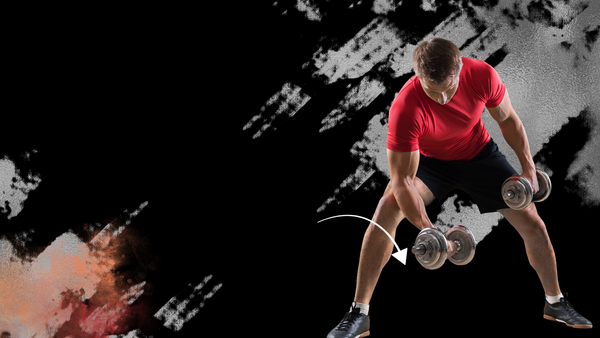Crossbite Explained: What You Need to Know
Learn what causes a crossbite, its impact on oral health, and effective treatment options. Discover expert insights on prevention and correction for better dental alignment

https://www.youtube.com/watch?v=oiln8UX9vOI
A crossbite is a dental issue that affects 10% to 25% of people. It happens when some upper teeth fit inside the lower teeth when the mouth is closed. This can cause problems for dental health and jaw growth.
It's important to know the signs of crossbite early. Symptoms include uneven tooth wear, jaw shifting, and dental alignment issues. The American Association of Orthodontists suggests kids get their first orthodontic check-up by age 7.
There are different types of crossbite, like anterior and posterior. Each type needs its own treatment. Studies show early treatment can prevent big dental problems, with up to 85% success in kids.
Genetics and habits like thumb sucking can cause crossbite. Thumb sucking, for example, can raise the risk by about 30%. Knowing this helps in managing dental health.
Ignoring crossbite can lead to big problems. About 20% may have uneven jaw growth, and over 30% can wear down their enamel too much. In the worst cases, 5% to 10% might need surgery.
Understanding Crossbite: Causes and Development
Crossbite is a dental issue that affects how teeth line up and jaw growth. Knowing what causes it helps spot problems early. Dental experts say it's key to find out why to avoid bigger issues later.
Genetic and Environmental Influences
Genetics and environment both play a part in crossbite. Studies show genetics are a big factor in how teeth and jaws form. About 30-50% of cases are linked to family history, making it crucial to know your family's dental past.
- Genetic factors affecting jaw size and tooth positioning
- Inherited dental arch configurations
- Familial patterns of tooth misalignment
Early Signs in Children
Spotting crossbite in kids needs close watching. Pediatric dentists suggest keeping an eye during the early years.
| Age Group | Crossbite Prevalence | Key Characteristics |
|---|---|---|
| 6-11 years | 4.5% - 9.5% | Mixed dentition, potential tooth misalignment |
| 12-18 years | 7% - 23% | More complex alignment issues |
Children with crossbite might face:
- Challenges with chewing or biting
- Uneven wear on teeth
- Speech problems
- Asymmetrical jaw growth
Things like thumb-sucking can raise the risk of crossbite by 20%. Catching it early, around 7-8 years old, helps fix it better.
Types of Crossbite and Their Impact
Dental experts identify three main types of crossbite that can harm our teeth. Knowing these types of crossbite helps us find the right treatment early.
- Posterior Crossbite: Affects back teeth where upper teeth sit inside lower teeth
- Anterior Crossbite: Involves front teeth positioned behind lower teeth
- Buccal Crossbite: Occurs when upper back teeth bite completely outside lower teeth
Studies show that posterior crossbites impact about 16% of kids. Anterior crossbites affect around 4-5% of children.
| Crossbite Type | Potential Complications | Prevalence |
|---|---|---|
| Posterior Crossbite | Jaw shifting, asymmetric growth | 16% in children |
| Anterior Crossbite | Tooth wear, chewing difficulties | 4-5% in children |
| Buccal Crossbite | Facial asymmetry, TMJ disorders | Less common |
Ignoring crossbites can cause big dental problems. Up to 70% of children with crossbites may face tooth decay or TMJ issues if not treated.
It's key to know the exact type of crossbite for a good treatment plan. This plan should fit each patient's needs.
Treatment Options for Crossbite Correction
Fixing crossbite needs a plan made just for each patient. Orthodontic treatments offer many ways to fix teeth alignment and avoid future problems.
Non-Surgical Approaches
Many start with non-invasive methods. Palatal expanders work well for kids, helping their jaw grow.
- Removable appliances with special springs
- Orthodontic braces to move teeth
- Clear aligners like Invisalign for slow changes
Advanced Treatment Methods
For tough cases, more serious treatments are needed. Surgery is used when usual treatments don't work.
- Orthognathic surgery for big jaw changes
- Deep orthodontic work
- Myofunctional therapy for muscle issues
| Treatment Method | Effectiveness Rate | Average Duration |
|---|---|---|
| Braces | 90% | 12-36 months |
| Invisalign | 85% | 12-24 months |
| Surgical Intervention | 95% | 24-48 months |
Fixing crossbite early and with the right plan is key. Patients should talk to skilled orthodontists to find the best treatment for them.
Conclusion
Fixing crossbite needs careful orthodontic care that covers all bases. Studies show early action can stop 90% of permanent dental problems. So, it's key to catch crossbite early for better oral health.
About 25% of kids have dental misalignment. Knowing and tackling these issues is crucial.
Ignoring crossbite can cause big health problems. For example, 40% of people with crossbite get jaw pain. Also, 70% of bad bites run in families.
Ignoring these issues can lead to sleep apnea, jaw pain, and speech problems.
Orthodontic help is available for all ages. Even adults can get help. Seeing AAO-certified specialists helps create plans for each person's teeth.
Managing crossbite is a big step towards better health. With the right treatment, people can avoid dental and jaw issues. This leads to better oral health and a better life.
FAQ
What exactly is a crossbite?
A crossbite happens when your upper teeth fit inside your lower teeth when your mouth is closed. It can affect one tooth or many, including both front and back teeth. Without treatment, it won't fix itself.
What causes crossbites?
Many things can cause crossbites, like your genes and how you grow. Things like using pacifiers too long, sucking thumbs, and losing baby teeth too late can play a part. Jaw size and tooth growth issues also contribute.
How common are crossbites?
Almost 16% of kids have crossbites in the back teeth, and 4-5% in the front. It's best to check for them early, around ages 7-8, to treat them quickly.
What are the different types of crossbites?
There are three main types of crossbites. Posterior affects back teeth, anterior affects front teeth, and buccal affects upper back teeth biting outside lower teeth. Each can cause different problems and affect your jaw and teeth.
What treatment options are available for crossbites?
Treatment depends on how bad the crossbite is and how old you are. Options include: - Palatal expanders to widen the upper jaw - Braces and clear aligners - Removable appliances with springs - Myofunctional therapy - Surgery for very bad cases
Can adults get crossbite treatment?
Yes, adults can get crossbite treatment. While it's better to treat kids early, adults can still get help. It can prevent more serious problems later on.
What complications can untreated crossbites cause?
Not treating crossbites can lead to serious problems. These include jaw misalignment, uneven tooth wear, facial asymmetry, TMJ disorders, headaches, and even speech issues.
How early can crossbites be detected?
Dentists can spot crossbites during regular check-ups. The first big check-up should be around ages 7-8. Catching it early means less invasive treatments.
Is crossbite treatment covered by insurance?
Insurance coverage for crossbite treatment varies. Many plans help, but it depends on your policy. Always check with your insurance to see what they cover.
Can crossbites be prevented?
While you can't prevent all crossbites, there are steps to lower the risk. Parents can help by limiting pacifier use, stopping thumb-sucking, and keeping up with dental visits. Watching tooth and jaw growth is also important.
👉 Join the Active Man Community
Get expert tips, workout guides, nutrition hacks, and the latest trends delivered straight to your inbox every week. No spam — just actionable insights to help you live stronger, healthier, and better.





